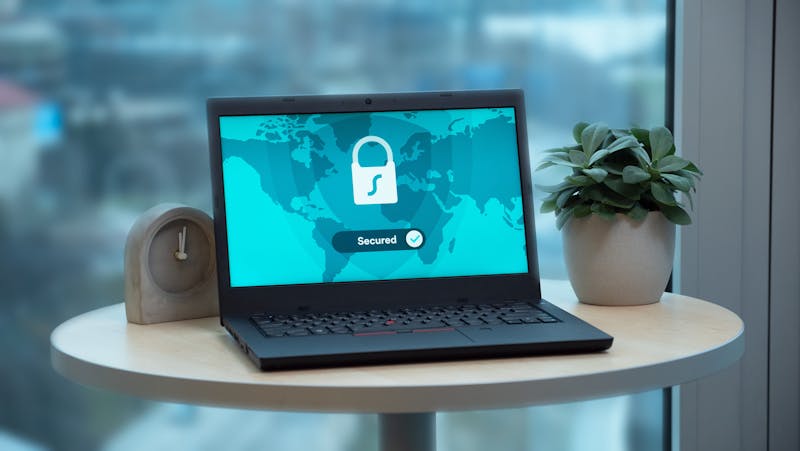Next-Gen Endpoint Security: Staying Ahead of Evolving Threats
With 29% of business conducted online, small and medium-sized businesses (SMEs) face a growing challenge: cyber threats are becoming smarter and more dangerous. The days when a simple antivirus program could keep your systems safe are long gone. Now, attackers use sophisticated techniques to target business endpoints, such as computers, tablets and mobile phones.
In this article, we’ll explain why upgrading your security is essential and what features to look for in a modern solution.
Why Traditional Security Measures Aren’t Enough Anymore
It’s not just big corporations that hackers are after. In fact, SMEs are often seen as easier targets because they may not have the same level of protection. Attackers are also getting more creative:
Ransomware
This type of malware can lock your files, demanding payment to restore access. It’s a growing threat, especially for businesses that rely on their data to operate.
Phishing Scams
These attacks trick employees into clicking malicious links or handing over sensitive information, often through realistic-looking emails.
Advanced Persistent Threats (APTs)
Unlike quick hit-and-run attacks, APTs are long-term, stealthy intrusions designed to gather data over time without being detected.
In short, the tactics have changed, and so must your defences.
What Makes Next-Gen Endpoint Security Different?
So, what sets next-gen endpoint security apart from traditional solutions? It’s all about using smarter technology to stay one step ahead of attackers. Here are some of the standout features:
1. Smarter Detection with AI and Machine Learning
Modern endpoint security tools use artificial intelligence (AI) and machine learning (ML) to spot unusual patterns and behaviours that might indicate a threat. These systems don’t just rely on known threats; they learn and adapt over time.
- Proactive Threat Detection: AI can analyse vast amounts of data to predict potential attacks before they happen, rather than just reacting to them.
- Automatic Responses: Instead of waiting for a human to step in, these tools can automatically contain threats, saving valuable time and preventing damage.
Imagine an employee accidentally downloads a suspicious file. A traditional antivirus might miss it if it’s a new type of malware. But with AI, the unusual behaviour of the file can be flagged immediately, preventing it from spreading.
2. Understanding User Behaviour to Spot Suspicious Activity
Traditional security often relies on detecting known threats, which leaves a gap for new and evolving attacks. Next-gen tools focus on behaviour analysis, which means they monitor how users and devices typically act and flag anything unusual.
- Stopping Insider Threats: Not all threats come from the outside. If an employee suddenly starts accessing files they don’t usually touch, the system can raise an alert.
- Detecting Zero-Day Threats: These are new, unknown vulnerabilities that haven’t been patched yet. Behaviour analysis helps identify them based on how they act, rather than relying on existing signatures.
3. Embracing a Zero Trust Approach
The idea behind Zero Trust is simple: never assume anyone or anything is safe, even if they’re inside your network. Instead of giving blanket access, Zero Trust checks every request, whether it’s from an employee’s laptop or a connected device.
- Limiting Movement of Threats: By segmenting the network into smaller sections, Zero Trust prevents attackers from moving freely if they do get in.
- Constant Verification: Users and devices are continuously verified, so access is only granted when it’s needed and approved.
Best Practices for Rolling Out Next-Gen Endpoint Security
It’s one thing to invest in cutting-edge security software, but making it work for your business requires a strategic approach. Here’s how SMEs can get the most out of their next-gen endpoint security:
Assess Your Current Security Setup
Start with a clear picture of your existing defences. Look for gaps where new threats might slip through. This will help you choose the right tools and features.
Make Security Part of Your Broader IT Plan
Don’t think of endpoint security as a standalone tool. It should be integrated with your overall IT strategy, including firewalls, intrusion detection systems, and cloud security.
Train Your Team Regularly
Your employees are often your first line of defence. Make sure they know how to spot phishing attempts and understand the basics of safe online behaviour. Regular training sessions can help keep security front of mind.
Work with a Trusted IT Partner
For many SMEs, managing security in-house can be a big challenge. Partnering with an IT provider such as ourselves means you get expert support and continuous monitoring, so you can focus on running your business while staying protected.
By using smarter technology and a proactive approach, these solutions can help businesses defend against even the most sophisticated attacks. If you’re ready to upgrade your security, EvolvIT can help you find the right tools and support to keep your data safe and your business running smoothly.
Don’t wait for a security breach to find out if your defences are strong enough. Get in touch to learn more about our tailored endpoint security solutions.






